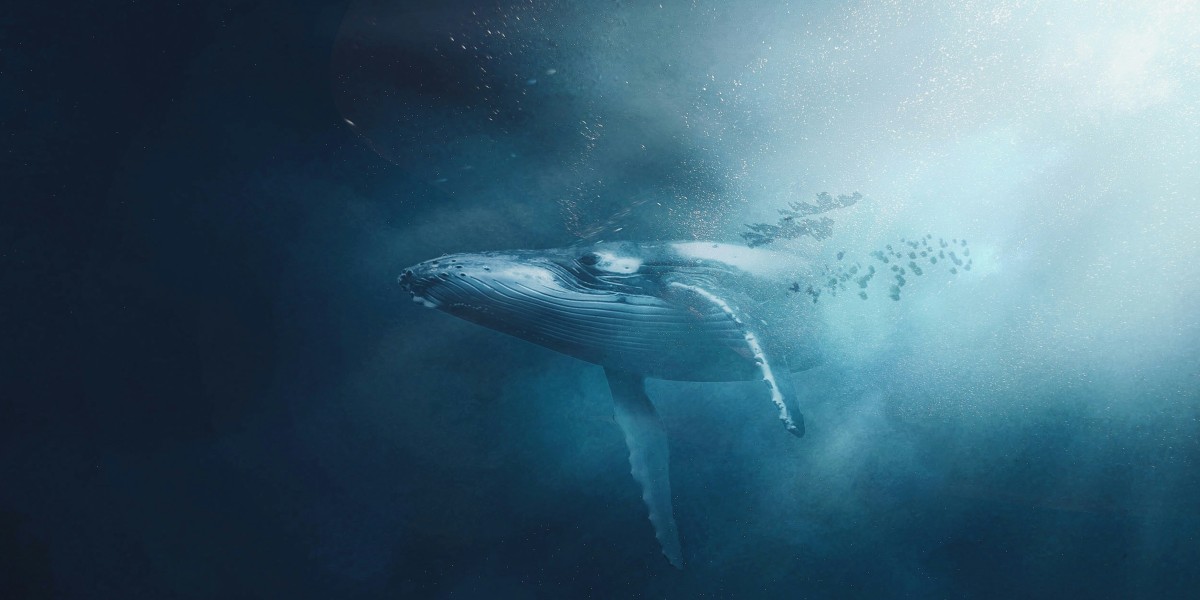Amorina Kingdon is a science writer whose work has been anthologized in Best Canadian Essays and received honors including a Digital Publishing Award, a Jack Webster Award, and a Best New Magazine Writer from the National Magazine Awards. Previously, she was a staff writer for Hakai Magazine, and a science writer for the University of Victoria and the Science Media Center of Canada.
Below, Amorina shares five key insights from her new book, Sing Like Fish: How Sound Rules Life Under Water. Listen to the audio version—read by Amorina herself—in the Next Big Idea App.

1. The ocean is not a silent world.
The ocean has a lot of sound in it. There’s wind and waves, the sound of currents or waves on coasts, rain, and even snowfall, which makes a little sound. There are earthquakes, mudslides, and the sound of icebergs scraping the seabed. Not to mention all kinds of animals. And we humans just don’t realize this because our ears have not evolved to work in water. So we put our head underwater, and we don’t hear much, and we just think, “Oh, sound doesn’t work here.” But in fact, sound works differently in water and maybe even better than it does in air.
First of all, it travels a lot faster. It’s about four and a half times faster in water than in air, and sound also moves through water pretty easily and goes a lot further. Seawater density changes with saltiness, temperature, and pressure, creating channels and layers where sound can travel hundreds or thousands of kilometers across the ocean.
Our other senses aren’t great in water. Water is often murky, especially near coasts, and it absorbs light well. So even in the clearest sea, below about 200 meters, you can’t see very much. Touch and taste work about the same, but as for smell, it’s carried by chemicals that move slower than they do in air. So if you need to know what’s going on around you underwater, sound can be the best channel of information for animals to tap into.
2. Sound is not just for whales.
The ear, which is an organ specifically for hearing, is just one way to tap into sound. Animals have special cells called sensory hair cells that detect movement, especially water molecules moving as sound waves pass. These cells appeared early in the history of life. They pop up in ears but also in organs that detect balance and movement. A remarkable paper from the 1950s suggested that any animal that can sense movement or gravity can probably also detect sound.
Even tiny animals that don’t have a backbone, like coral larvae, can detect the sound of reefs and move towards it to settle and grow in the right place. Crabs, lobsters, scallops, mussels, squid, and octopus don’t have ears but can still pick up and react to at least some sounds. In fact, there’s a shrimp called the pistol shrimp that fights with really loud claw snaps. Fish have ears too. They evolved the first ear in the water long before amphibians, reptiles, mammals, or birds ever went onto the land. Today, many fish make sounds for mating and defense using body parts like their gill arches, grinding their teeth, or drumming on their swim bladders. Many fish even have special structures that make their ears more sensitive.
“A remarkable paper from the 1950s suggested that any animal that can sense movement or gravity can probably also detect sound.”
We all know that whales sing, and some whales sing, but whales also make many other kinds of sounds. Blue whales and fin whales have calls so low pitch they get picked up on instruments that listen for earthquakes. Other whales echolocate using high-pitched sounds above our hearing range to find food and navigate the ocean. Other mammals like seals and sea lions make trills and calls underwater. A new field of research is looking at how animals like shellfish and invertebrates also detect vibrations on the sea floor or just above it. We don’t hear any of this unless we use special microphones called hydrophones. But when we do, we learn that hearing and making sound underwater is not the exception; it’s actually the norm.
3. For mammals, family groups and bonds are everything.
Marine mammals define their groups and identities with their sounds. Whales use so-called contact calls to keep in touch and track each other over great distances where they can’t see each other. This is crucial, even life-and-death important, between mothers and calves. Whales don’t have arms to hold their babies, but newborn calves still nurse and depend on their moms for food and protection, so they must stay close. Mom and calf will murmur quiet contact calls back and forth so they don’t get separated.
Some species, like bottle-nose dolphins, take this even further. They have signature whistles unique to each dolphin, which lets them tell other dolphins their identity. Dolphins can even call each other by their signature whistles, something called labeling, which is unique in the animal kingdom and suggests amazing learning feats. Some species, like sperm whales and killer whales, use unique clicks or dialects that define their family groups in areas where many family groups mingle. Keeping their family unique among the species is strong evidence that many whales have what we humans would call a culture.
4. Underwater noise from human activity can be harmful.
Underwater noise from sources like sonar, ships, and pile driving can mess with animals in ways we never thought of. Noise is a technical term meaning any unwanted sound that interferes with an important signal. We usually think of harm as something obvious, like an oil spill or blunt force trauma, but once we understand how important sound signals are to animals, we see how noise creates profound problems.
“Studies found that lobsters exposed to seismic air gun noise had damaged balance organs, making it hard for them to orient themselves.”
Noise can mask whale dialects or contact calls, making them spend time and energy running away from the sound. Whales must hunt and forage daily, so noise scattering them wastes valuable time and calories. Noise doesn’t just drown out signals; it can cause more subtle impacts. Cleaner wrasse on some reefs set up stations where larger fish come to be cleaned, but when motorboats buzz by, the wrasse try to cheat more, taking bigger bites out of the client fish, changing the whole dynamic.
Noise can even cause subtle damage to animals. Studies found that lobsters exposed to seismic air gun noise had damaged balance organs, making it hard for them to orient themselves. Scallops exposed to the same noise showed changes in their fluid chemistry months after exposure. These subtle damages affect how animals live in the ocean, even if not immediately obvious.
5. Now is a critical time for dealing with underwater noise.
Noise from global shipping is found in every ocean, even at the bottom of the Marianna Trench, because sound travels very fast and far underwater. There is almost no regulation on this noise, but international standards and proposals are coming up for discussion in the next few years. Individual countries like Canada and many EU member states are putting guidelines into place, which will be crucial.
This regulation will be especially important in the Arctic and the Deep Sea. The Arctic Ocean isn’t quiet, but there isn’t much human noise yet. As sea ice retreats, more shipping and industry will bring noise, and we don’t know how animals used to a pristine soundscape will react. We know little about remote ecosystems in the Deep Sea, but places like deep hydrothermal vents have unique soundscapes. As interest in deep-sea mining ramps up, understanding these soundscapes will be vital for meaningful regulation and protection before we intrude.
To listen to the audio version read by author Amorina Kingdon, download the Next Big Idea App today:
































